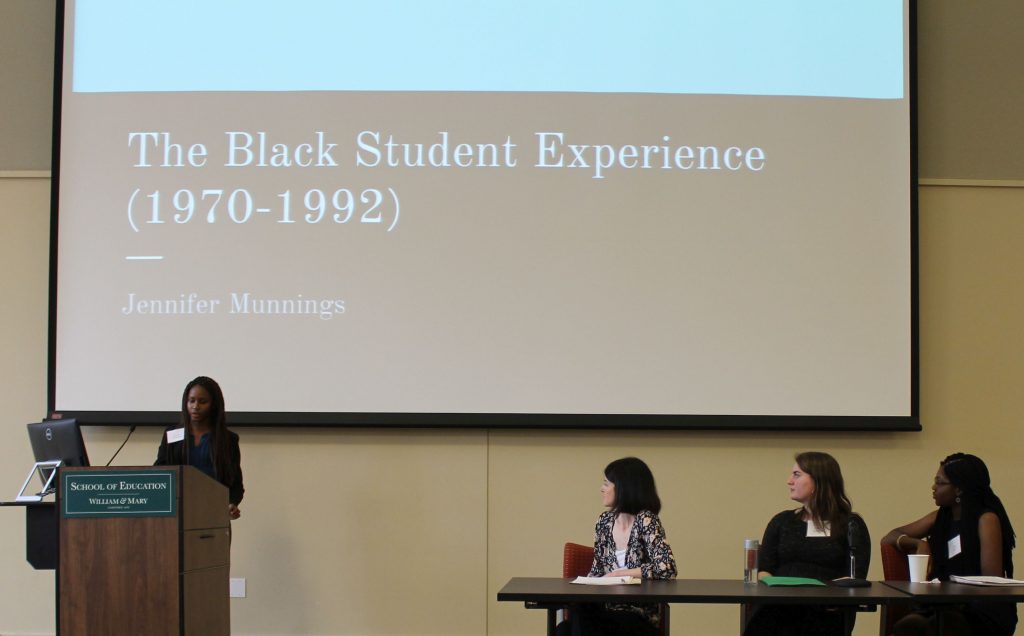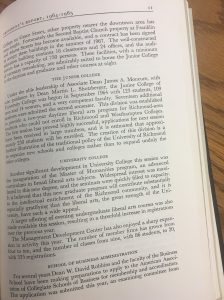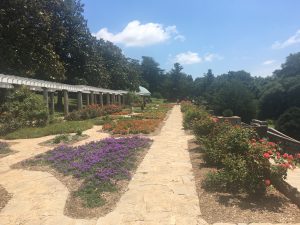By Jennifer Munnings
From slavery to Jim Crow, to separate but equal, laws in Richmond were constructed to marginalize and oppress black people while lifting up white people. The Confederacy lost the war against the continuation of slavery, but refused to let its racist ideals die so easily. The construction of institutions and laws created in the 20th century that targeted the black community had lasting effects and shaped Virginia and the city of Richmond.
Even with wins like the Supreme Court case Brown versus Board of Education in 1954 that declared that segregated public schools were a violation of the Constitution, the integration process was met with extreme resistance. Some schools closed down rather than allow black people to attend. In 1919, black public schools were overcrowded, underfunded, and the teachers were underpaid, which was to be expected when the government did not see a need to educate black people, believing that they were incapable of understanding the information regardless, and that they were destined to be laborers. Education being inaccessible to black people was an effective method in keeping black people in subordinate positions to white people.
Additionally, as a means of maintaining the racial hierarchy, Virginia schools refused to allow black people to be principals in black schools, creating problems of positive representation. White schools taught false histories, raising generations of students to believe that the people of Virginia were against slavery for the most part, when in fact they were headquarters for it. This notion was perpetuated by a book 10th graders had to read in the 1920s called “Slavery and Secession” by Beverly Bland Munford and social studies textbooks for fourth graders in 1965. Virginia’s General Assembly controlled the rhetoric surrounding slavery, and generations of students were trained to believe a carefully constructed narrative surrounding its history that puts white southerners on a pedestal and completely ignores the humanity of black people.
Another method of control that Virginia used was residential segregation and in turn economic independence. The Federal Housing Administration used race as a basis of grading residential areas. As a result, all black communities received D ratings and were denied mortgages. Although this was legally reversed in 1977, Virginia continued this practice, and bank reviews show the disparity between mortgages given to white versus black people. As a result, black people were denied equal access to housing, this limited their ability to be independent of white people. Richmond gentrified black communities after 1964, destroying homes, and replacing them with public housing complexes and repaying the black people they displaced with a few hundred dollars and nothing else. Additionally, the construction of the I-95 turnpike which destroyed at least 1,000 homes in the historically black neighborhood Jackson Ward, highlights Richmond’s absolute disregard for black lives. The Richmond Times Dispatch said that the highway would improve the look of the city, meaning that the black people living in Jackson Ward were tainting it, and bringing down the attractiveness of the city.
With limited economic opportunities, and lack of support from the government, it is obvious that black people were pushed out of Richmond at every opportunity. The General Assembly sent free black people to Liberia in the 19th century, and in the 20th century, instead of providing black people with graduate schools, they created out-of-state scholarships. An independent, educated, and economically stable black person was something to be feared because they challenged the hierarchy and the legitimacy of white supremacy. Virginia’s government did all it could to challenge black people in achieving that status.
Richmond suffered greatly from 1955 to the 1970s. In Richmond’s Unhealed History Benjamin Campbell writes, “[Richmond’s] infrastructure was decaying, its bonding capacity was exhausted, and there was no new land for development or expansion.” In an attempt to rectify this, the city continued to implement laws that encouraged segregation and discrimination. This time however, the city was met with resistance, but white supremacist powers were stronger. Urban renewal projects are great examples of racism in Richmond as they highlight the power structures. The I-95 highway was placed strategically to involve white people more with the community and to destroy the historically black neighborhood. Richmond’s tumultuous history with racism is evident in its social structure, architecture, and governing bodies.
Jennifer Munnings is a rising sophomore, intending to major in Sociology with a minor in Women, Gender, and Sexuality Studies. Jennifer is new to the Race and Racism Project, joining in Summer 2017 as a summer fellow.
 On March 16, 2018, five undergraduate students who have worked with the Race & Racism at the University of Richmond Project had the opportunity to present at the Lemon Project Symposium at the College of William and Mary. The panel, entitled “Seeing the Unseen and Telling the Untold: Institutions, Individuals, and Desegregating the University of Richmond,” was moderated by Dr. Nicole Maurantonio and featured Dominique Harrington, Madeleine Jordan-Lord, Elizabeth Mejía-Ricart, Jennifer Munnings, & Destiny Riley. Below you will find the text and slide images of Jennifer Munnings’s presentation, focusing on the research she conducted as a 2017 A&S Summer Research Fellow with the project. Click here to read more of her writing from last summer, and here to explore the exhibit she and her teammates created, “The Black Student Experience at UR (1970-1992).”
On March 16, 2018, five undergraduate students who have worked with the Race & Racism at the University of Richmond Project had the opportunity to present at the Lemon Project Symposium at the College of William and Mary. The panel, entitled “Seeing the Unseen and Telling the Untold: Institutions, Individuals, and Desegregating the University of Richmond,” was moderated by Dr. Nicole Maurantonio and featured Dominique Harrington, Madeleine Jordan-Lord, Elizabeth Mejía-Ricart, Jennifer Munnings, & Destiny Riley. Below you will find the text and slide images of Jennifer Munnings’s presentation, focusing on the research she conducted as a 2017 A&S Summer Research Fellow with the project. Click here to read more of her writing from last summer, and here to explore the exhibit she and her teammates created, “The Black Student Experience at UR (1970-1992).”

